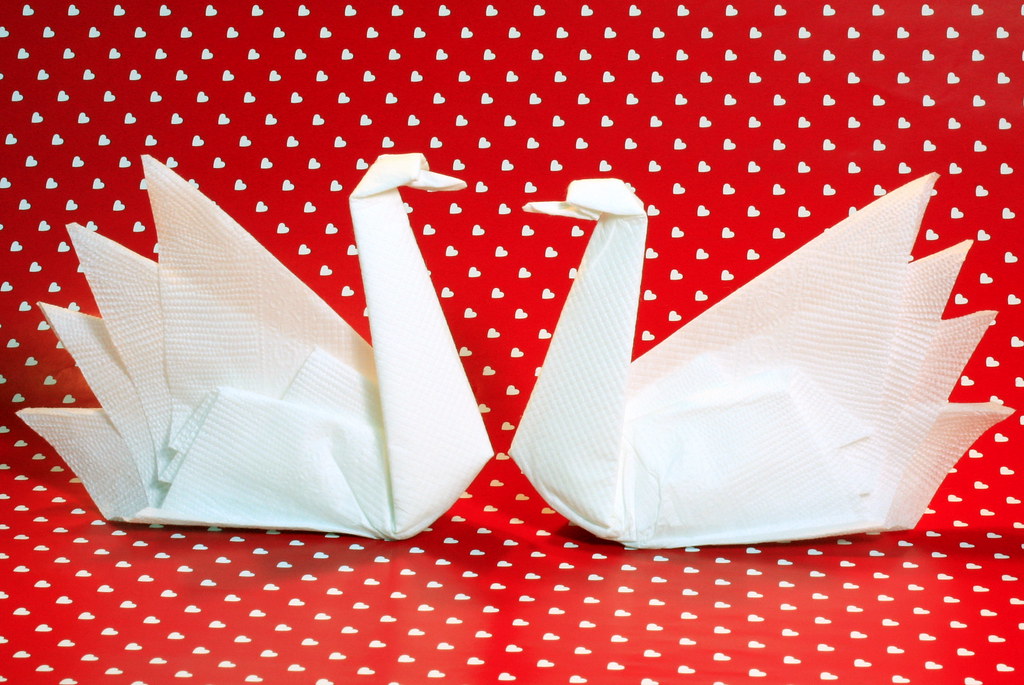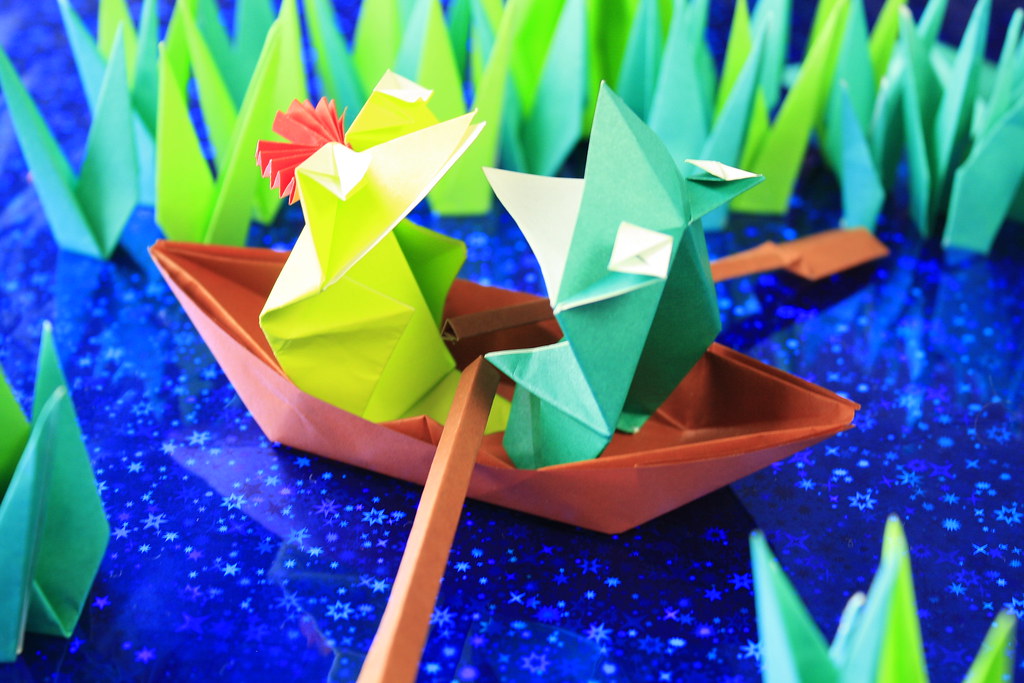A few weeks ago I stumbled across a Origami kit in Coles, and I decided to pick it up, seeing as it was only $12 for a book and a bunch of origami paper. I've always thought origami is so amazing, but I'd never actually gone out and tried it (besides paper airplanes and hats...but who hasn't tried those?). So I got home and opened it up, and immediately started the easy examples in the book. I have to admit that I did get a bit lost and confused at some points, and wasn't sure how certain things were supposed to fold, but in the end my origami almost looked like the ones in the book.
For those who might not know, origami is the Japanese art of folding paper into shapes representing objects (e.g., flowers or birds). Almost any object you can think of, you can make it with origami. Even objects such as envelopes, boxes, coasters, picture frames, bookmarks, photo albums, and much more can be made simply by folding paper. You can also make such animals as lions, ravens, giraffes, swans, and even cute little rabbits and penguins.
Searching websites online is a good way to discover new origami, or if you're stuck you can try looking up a different diagram for it, and in some cases even video's which show step by step how to complete certain pieces. Origami is also becoming more popular in the west, and there are a lot of bookstores and craft stores which sell origami paper, as well as books.
History of Origami
The history of origami is under debate. Unlike other art forms, paper degrades quickly leaving no artifacts to suggest where origami originated and who first invented it. The information listed here provides a good overview of origami but is not an authorative analysis of the subject. For detailed information regarding the history of origami, consult the works of David Lister: The History of Origami in paperfolding.com and the Lister list from British Origami Society.
Textbooks will say that paper was first invented in China by Cai Lun (also written Ts'ai Lun) in 105 A.D. However, archeological evidence suggest that paper was invented even early than this. One can imagine that if there's paper, then the paper may have been folded as well. There is no evidence of this but, if it was true, then paper folding would have started here.
During the 6th century, paper was introduced into Japan. It is here that paper folding became an art form and evolved into what we know today as origami.
Initially, paper was expensive and therefore not available to the general public. Paper folding, was not a hobby: it was for formal functions. For example: "Origami Tsuki" was a folded piece of paper that accompanied a valuable gift and it served as a certificate of authenticity. "Noshi" was folded-paper that accompanied gifts and functioned as tokens of good fortune. "Tsutsumi" was formal gift wrappers. These ceremonial folds were simple and symbolized sincerity and purity. [Photo: noshi collection from the National Diet Library.
Paper folding also developed in Spain sometime between the 8th and 12th century. Historians believe that paper and paper-making was introduced into Europe from Asia via the Silk Route. It is not clear whether paper-folding was invented in Europe independently or if it was also introduced from Asia. Photo: "pajarita"
Paper folding was documented for the first time in 1797 in the book called “Folding of 1000 Cranes“ (Senbazuru Orikata). Next, was a series of books called “Window on Midwinter“ (Kan No Mado). These books were about Japanese customs and there is two sections on paper folding. [The name of these books was probably Kayaragusa]
By 1890's, the word origami was more or less officially used to refer to what we call as origami. Previous to this time, it was called "orikata", "orisue", "orimono", or "tatamigami".
In the 1950, Akira Yoshizana and Sam Randlett developed a standard set of origami symbols to describe how to fold paper into models. These symbols remained essentially the same and is used in origami diagrams today. [Note: David Lister suggests that it was Sam Randlett and Robert Harbin who formalized the use of the origami symbols.]
Currently, there are thousands of published origami books. The art form continues to evolve and is beyond the traditional origami that we think of. Origami styles and techniques include: technical origami, mathematical origami, contemporary origami, modular origami, wet folding origami, pureland origami, dollar bill origami, and business card origami.
History of Origami quoted from the Origami Resource Center.
Related Links:
Origami Club
Origami.com
Origami Instructions
Origamisan




Post a Comment